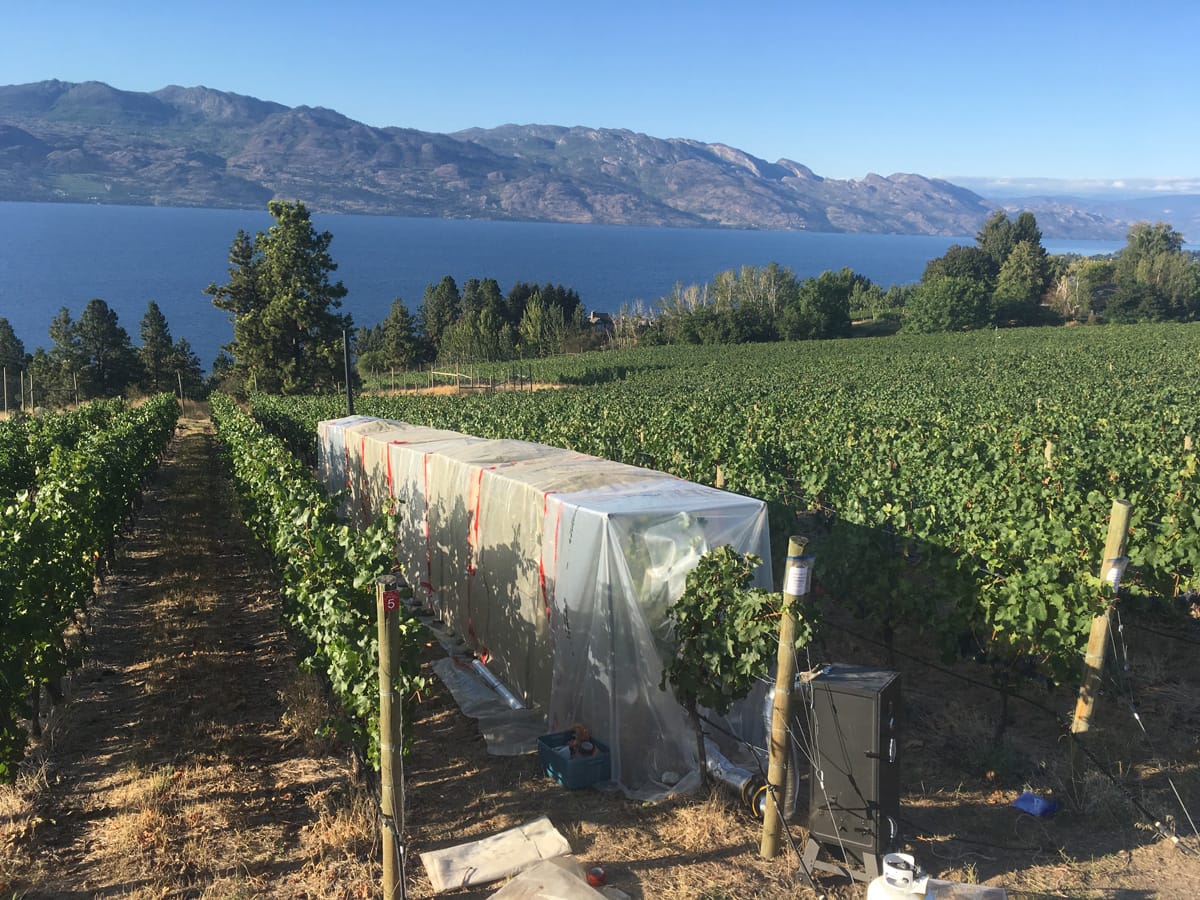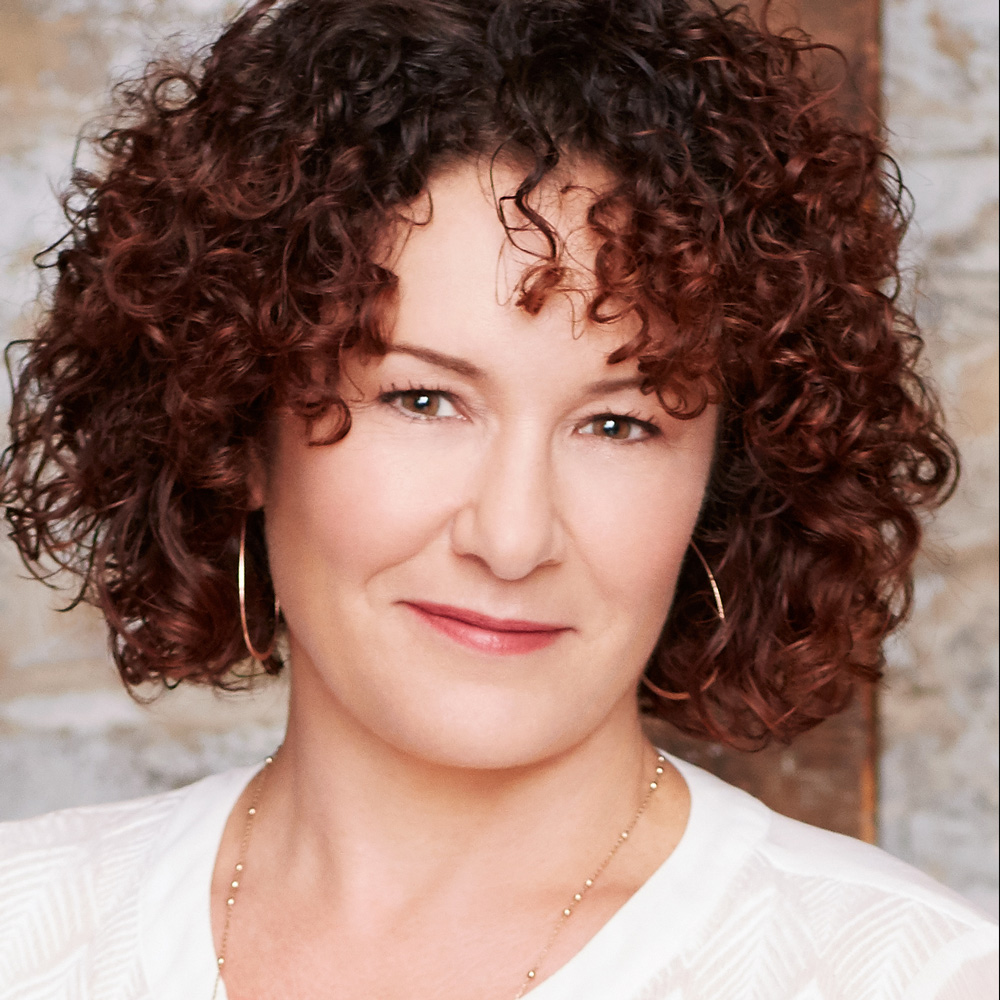
Wine Culture Magazine

UBC researchers use a smoking tent to test whether a phospholipid spray can prevent smoke taint in grapes. Photo courtesy of Wesley Zandberg
Here are three ways British Columbia’s researchers and innovators are pushing the province’s wine science forward.
Devastating wildfires have already challenged the B.C., Australia and California wine industries—a issue that climate change is making increasingly urgent. Now, UBC researchers have pioneered a potentially simple, economical strategy for saving wine grapes from smoke taint. A phospholipid spray, already used in B.C. to prevent ripening cherries from cracking, could be an answer, according to a study recently published in the Journal of Agricultural and Food Chemistry.
Two years ago, a conversation between a viticulturalist, a PhD student and study author Wesley Zandberg (an assistant professor in chemistry at UBC Okanagan) spurred testing of three different sprays to block smoke exposure on grapes. The results were so promising they’ve already generated interest from California, Australia and Oregon.
The team is currently making wine from grapes that were protectively sprayed in 2019, what Zandberg calls the “gold standard” test for whether their solution fully blocked smoke taint. He explains that when wine grapes absorb smoke, the grapes react by using enzymes to coat the smoke compounds in sugar, meaning the smoke isn’t noticed until it’s released by yeast during the fermentation process.
“Many grape-growers don’t have the means to pay to test their crops,” Zandberg says. “Producers have to wait weeks to know whether their plants are suitable or not. Meanwhile, costs and risks mount as their crops sit on the vine.” His team is working on replicating and refining the promising results before the strategy can potentially be implemented locally and globally.
Anyone who’s visited a wine-aging cellar has seen the laborious effort required to extract the bung (stopper) from a barrel and remove a sample using a wine-thief device—a disruptive process that potentially introduces oxygen and contaminants to the maturing wine, costing wineries in possible spoilage or waste. It can also unwittingly spread taint among several barrels, quickly magnifying any existing cellar problems.
After learning about this common issue, some University of B.C. mechanical engineering and MBA grad students turned it into a research project and now an award-winning company. BarrelWise Technologies Ltd. allows wineries to sample and top-up wine barrels without opening them, through a unique silicone bung that attaches to a sterile wand and mobile tank system. “There’s the graveyard of prototypes,” laughs CEO Jason Sparrow, pointing to a row of milky-white silicone plugs lined up along one side of the room. The company already won a B.C. Ministry of Agriculture Agritech Innovation Challenge award last year.
“Our vision is precision barrel management through technology,” says Sparrow. BarrelWise systems are already in use at Sandhill Wines in Kelowna, plus Chateau Ste. Michelle Winery and Betz Family Winery in Washington. Eventually, on-the-spot testing of samples will happen right in the cellar, from BarrelWise’s winery-friendly mobile cart.
A smart for-fee leasing model keeps the cost and process of adopting the BarrelWise system quick and accessible for wineries, and allows for smooth upgrades to future technology and new features. barrelwise.ca
Small-business owners with brilliant ideas don’t always have the resources to bring them to market. In B.C.’s booming beverage-alcohol industries, a winery, brewery or distillery might not have the facilities or funds to research an ingredient, develop a new product or even test the safety of new packaging.
The variety of projects is half the excitement of being here.
That’s where the new BC Beverage Technology Access Centre (BCBTAC) comes into play. The Centre, funded by a five-year, $1.75-million federal grant plus provincial and college support, was announced last fall and opened with a soft launch a few months ago. “With no marketing, we’ve already had strong initial demand for our services,” says manager Wes Peterson, describing diverse projects from testing the lining in wine cans to researching how to dispose of or recycle a common fining agent used to clarify wine. It’s all part of “supporting the fermented beverage sector,” Peterson says. “The variety of projects is half the excitement of being here.”
On a tour of the bright facility on the Penticton campus of Okanagan College, Peterson points out well-equipped chemistry and microbiology labs, plus a tasting room that can be used for anything from consumer research to food-pairing seminars. BCBTAC also offers business and financial planning services, expertise in applying for and accessing grants and the ability to draw on OK College and even UBC researchers as needed.
Every wine that aspires to qualify for VQA status, or for export into foreign markets, requires a lab stamp of approval on various measures (such as pH, sugar and sulfites). “Right now, [wineries] might be sending work to California or Oregon,” says Peterson. “We really need to up our game if we’re going to take $30, $40 or $50 bottles of wine to market internationally.”
Despite its romantic image, wine is as much science as it is art, and more and more wine lovers are choosing to pursue it as an education. The scientific study of wine and winemaking is known as oenology, distinct from viticulture, the farming side of wine. For those wishing to study oenology, Ontario’s Brock University has become a world leader in training and research with its Cool Climate Oenology and Viticulture Institute. Its four-year co-op program teaches disciplines including sensory science, biotechnology, microbiology, genetics and plant physiology. brocku.ca/ccovi

Charlene Rooke writes about and drinks wine in Vancouver while working toward WSET Level 3 certification. Her family has Okanagan roots as former Kelowna orchardists, and she loves dry, aromatic white wines.

Charlene Rooke writes about and drinks wine in Vancouver while working toward WSET Level 3 certification. Her family has Okanagan roots as former Kelowna orchardists, and she loves dry, aromatic white wines.
© 2024 Vitis Magazine